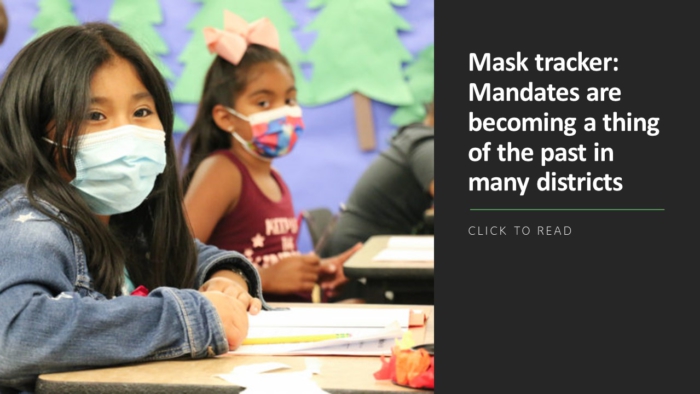
As the person responsible for the distribution of district communications in the 2020/21 school year, I managed all communications-related activities across 28 schools serving more than 17,000 students from Transitional Kindergarten (TK) to grade 12. Until the previous year, our schools were using various online platforms for everything from district-level mass notification to classroom portfolio tools to manage family, social media, website, and general communications.
We were also using Google Forms to collect student data—yet another technology tool that administrators have to learn and use for communications. Even after the Google Forms information was submitted, sometimes the data would be resubmitted or edited, leaving staff to figure out who made the adjustments and why.
It was just a nightmare. We had an entire team that spent hours on a regular basis going through spreadsheets trying to figure out which entries were duplicates or reconciling them with the information that we had in Aeries, our student information system (SIS). These challenges escalated when we moved to remote instruction due to the pandemic. At that point, we knew that the district needed a safe and secure platform for all of its school-home communication.
Adding up the benefits of a districtwide communications platform
After exploring our options, we decided to implement ParentSquare, a single, unified platform that manages all district mass notifications, as well as parent contacts, conference signups, and permission slips. We’d been using it for district-level communication up until that point, but its use by individual schools and teachers was inconsistent and many of the features available had not been used at all. Here are seven ways our unified communication platform helps us operate more effectively and efficiently across the district:
- Keep tabs on student health during the pandemic. This of course became a huge issue for districts during the COVID-19 pandemic. For the entirety of the last school year we used a customized form within the platform for daily, student health screenings—a process that we would have had to manage in Google Forms. That would have been fine if all we were doing was temperature checks, but tracing that data back to each student and checking the accuracy of the data in each of those forms would have been tedious even if it were possible. With ParentSquare, staff could track each individual student, follow up if the recipient did not complete their daily screening, and if any student had a COVID-19 exposure, we could notify their parent or guardian right away.
- Close the equity gap by reaching diverse student groups. With a diverse student population, 23% of which is Spanish-speaking, we can easily translate our forms and communications for those recipients. The platform can be used to provide custom translation of our forms and other communications into Spanish and auto-translates for multiple other languages which we can edit as needed.
- Maintain accurate records. Student information systems (SISs) weren’t designed with communication with parents as one of the primary functions. As a result, updating records requires significant administrative overhead. The inevitable changes in parent emails and phone numbers—particularly in a district that has frequent changes in student population due to shifts in employment and other economic factors—are difficult and time-consuming. A good communications platform should be able to capture changes to contact information from parents, and let schools update their SIS as needed.
- Develop a two-way communication stream. Instead of different channels for email announcements, texts, and phone calls, ParentSquare allows two-way communication, where families can choose how and when they want to be contacted, with a direct channel back to the school with questions or concerns. It also makes it easier for parents to know where to go when they’re seeking trusted information from the district, school, or classroom.
- Get better data and reporting. In the past, we used a Google Form to send out surveys. With our forms now integrated into the platform, we’ve gained access to clean data and reliable reporting that we didn’t have previously. Now, we not only have access to all our collected data, but we can also gather additional information from parents as needed. We know that our data is clean and reliable, whether or not someone has responded to us, and if they need a reminder. A unified two-way communications platform also helps us develop consistent content, target the right audience, create a steady cadence, stick to our branding (i.e., via templated newsletters), monitor engagement, and adjust our messaging accordingly.
- Easily figure out students’ “family trees.” We now have a more reliable way of determining sibling relationships. Previously, our accounts were disconnected, so I used to literally draw family trees to try to figure out who was related to whom and which contact information was incorrect. We now have a unified communications platform that conveniently syncs with our SIS to auto-populate Student ID numbers and other important data.
- Deliver documents securely. We use the platform’s secure document delivery for Title III reports, IFEP letters, and other documents. This ensures that our documents are delivered in a secure, safe manner. It also streamlines our document-sharing process. With less printing and postage to worry about, our district saves both money and time on these clerical tasks. Plus, our administrators and teachers can see who opened, clicked on, and responded to a piece of communication.
These and other benefits proved extremely valuable during the pandemic and continue to pay off for our district as our school environment normalizes. Without a unified communications platform, for example, our elementary school ‘intent to return’ forms would have needed to be done on paper (for in-person responses) or using Google Forms or another third-party survey product (for virtual responses). Instead, it’s all handled in our single communications platform.
Jennifer Baker is the former communications media specialist, now in library services at Napa Valley Unified School District in Napa, Calif.
More from DA



